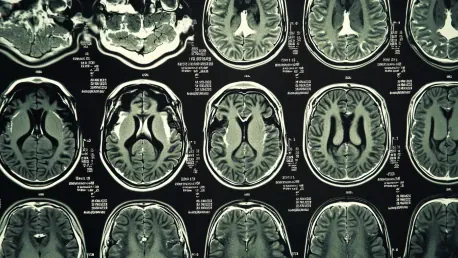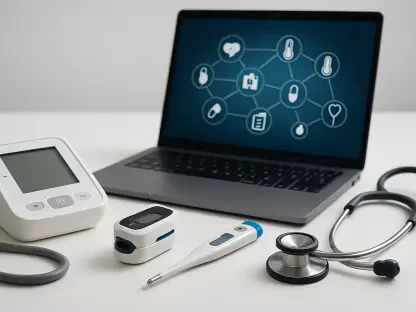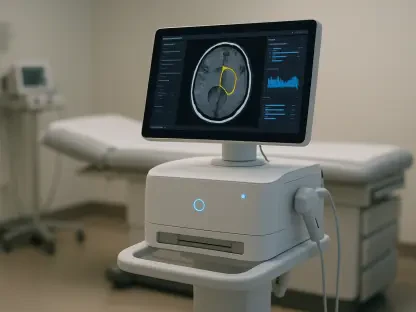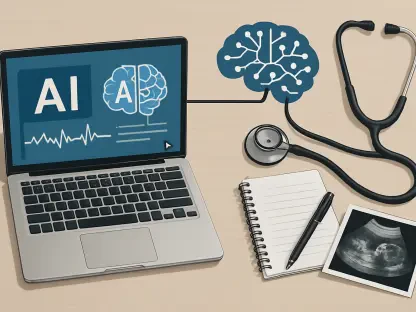Radiology services around the world are grappling with immense challenges brought about by the dramatic increase in patient imaging demands. This surge, paired with a substantial shortage of radiologists, has culminated in high rates of burnout, overwhelming work backlogs, and subsequent impacts on radiologist performance and patient safety. The current state of the radiology sector is critically in need of sustainable interventions, among which teleradiology has emerged as a promising solution.
The Radiology Crisis
The mismatch between the soaring patient care demands and the inadequate availability of radiologists is a central issue. Globally, over 4.2 billion imaging procedures are conducted annually, underscoring the essential role of radiological imaging in 80% of patient episodes. This immense strain on radiologists has considerably heightened burnout and stress-related concerns. A comprehensive global survey conducted by Everlight Radiology reveals troubling findings, highlighting that more than half of the radiologists report burnout and stress, while nearly half express anxiety about escalating backlogs and delays. These pressures are unsustainable and pose serious threats to the viability of radiology services and the quality of patient care.
Adding to the complexity of the crisis are night shifts, a major contributor to fatigue and burnout among radiologists. The survey indicates that 88% of radiologists have worked night shifts, with 36% regularly undertaking them. These nocturnal duties significantly degrade performance, accuracy, and productivity, increasing diagnostic errors by 50% during these hours. The dire situation calls for urgent measures to establish a sustainable and safe working environment that does not compromise clinician well-being or patient care. The ongoing stress from night shifts reinforces the necessity of innovative solutions to alleviate the burden on radiologists.
The Impact of Night Shifts
Night shifts remain a significant challenge in addressing the radiology crisis. The relentless schedule imposed on radiologists not only exacerbates burnout but also hampers their overall productivity. Adding to this is the fact that working nocturnal hours has been shown to increase diagnostic errors by a staggering 50%. This is a considerable risk factor that impacts patient safety and underscores the critical need to reassess the current modus operandi within the radiology sector. The demand for round-the-clock imaging services has inadvertently contributed to the unmanageable workload experienced by radiologists.
Moreover, the mental and physical toll taken by these shifts is manifesting in long-term health consequences for the professionals involved. The survey findings elucidate that a significant portion of the radiologists persistently working night shifts report severe stress and burnout. As the pressure mounts, the degradation in performance metrics is evident, resulting in compromised patient care. Such circumstances highlight the paramount importance of creating a more balanced and supportive work environment that prioritizes clinician well-being without sacrificing the quality of patient outcomes. Targeted interventions are crucial to mitigate these detrimental effects.
The Promise of Teleradiology
In response to the mounting pressures within the radiology sector, teleradiology offers a viable and promising solution. By facilitating the electronic transmission of radiological images for remote diagnosis, teleradiology significantly alleviates backlogs and reduces workloads. The Everlight Radiology survey indicates that the majority of radiologists view this technology as a critical lifeline. It enhances operational efficiency and diagnostic accuracy, which is essential for timely patient care. This innovative approach not only boosts radiologists’ productivity but also plays a pivotal role in preventing burnout.
Furthermore, the adoption of teleradiology has demonstrated substantial benefits in providing urgent diagnostics and resolving pressing workload issues. Radiologists can deliver timely and accurate reports, ensuring that patient care remains uncompromised despite the high demand for imaging services. This methodology has been particularly instrumental in connecting remote and underserved areas with specialist radiologists, thereby extending the reach and impact of radiology services across diverse regions. The systemic integration of teleradiology into the healthcare framework can effectively distribute the burden and optimize radiologist schedules.
Everlight Radiology’s Innovative Model
Everlight Radiology exemplifies the potential of teleradiology through its unique 24/7 “follow-the-sun” model. By leveraging a global network of consultant radiologists, tasks are distributed across various time zones, ensuring reports are generated during radiologists’ awake hours. This approach maximizes accuracy and efficiency while supporting overworked radiology departments. Utilizing the “follow-the-sun” model, Everlight Radiology caters to the rising demand for imaging services without compromising clinician well-being. This innovative model offers a robust response to the critical shortage of radiologists and high burnout rates.
The “follow-the-sun” model addresses the pressing need for timely and accurate diagnostics while mitigating the adverse effects of overwork and nocturnal duties. By engaging consultant radiologists across different geographies, this model ensures continuous and efficient processing of radiological reports. Furthermore, it aligns workloads with optimal working hours, enhancing productivity and accuracy. This method not only supports the radiologists in maintaining their well-being but also ensures that patient care remains unaffected by the constraints imposed by traditional working hours.
Building a Sustainable Future
Rob Anderson, CEO of Everlight Radiology, emphasizes the need for a combination of strategies to meet the growing demand for imaging services. He advocates for the integration of teleradiology and outsourcing as vital components of the solution, supporting radiologists to enhance the overall quality of patient care. Integrating artificial intelligence responsibly and investing in professional development are additional strategies to ensure a sustainable future for the radiology sector. By focusing on these areas, the radiology field can navigate its challenges and maintain its critical role in patient care pathways worldwide.
The commitment to advancing teleradiology methodologies and supporting the professional growth of radiologists is paramount in securing a sustainable future for the sector. Everlight Radiology’s initiatives to repatriate, relocate, and offer flexible opportunities for radiologists are central to this vision. By reintegrating global talent into the healthcare systems they were trained in, the company aims to mitigate talent drain and bolster radiologist capacity worldwide. These efforts exemplify the symbiotic relationship between enhancing radiologist support and improving patient care, ensuring that the radiology sector can withstand current challenges and flourish in the future.
Conclusion
Radiology services globally are facing significant challenges due to a sharp increase in patient imaging demands. This rapid growth, combined with a noticeable shortage of radiologists, has led to high levels of burnout among radiologists, overwhelming work backlogs, and negative impacts on both radiologist performance and patient safety. As the demand for diagnostic imaging continues to rise, the pressures on the current workforce only intensify, risking the quality of care provided.
The radiology sector is critically in need of sustainable solutions to address these issues. One such promising intervention is teleradiology, which leverages technology to allow radiologists to interpret medical images remotely. This innovation not only alleviates some of the workload pressure but also ensures that patient care is maintained at a high standard by providing timely diagnostics. As healthcare systems continue to deal with increasing imaging demands, integrating teleradiology can be a vital step toward addressing the persistent challenges within the radiology field.









